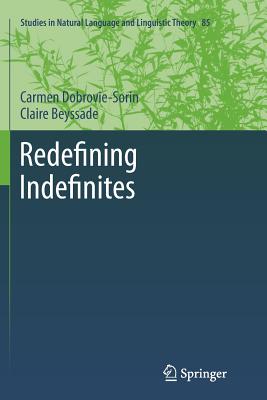You are here
Back to topRedefining Indefinites (Studies in Natural Language and Linguistic Theory #85) (Paperback)
Description
Foreword .- Introduction . Chapter 1: Why indefinites? . 1 Typology of DPs . 1.1 Referential DPs . 1.2 Quantified DPs . 1.2.1 Tripartite structures . 1.2.2 Generalized quantifiers . 1.3. Indefinite DPs . 2 The representation of indefinite DPs . 2.1 Indefinites and existential quantification . 2.2 Indefinites as free variables . 2.3 Indefinites as choice functions . 2.4 Indefinites as Skolem terms . 2.5 Indefinites and properties . 2.6 Indefinites as existential generalized quantifiers over amounts . 2.7 Conclusion . 3 Semantic properties of nominal determiners . 3.1 Conservativity . 3.2 Intersectivity . 3.3 Symmetry . 3.4 Proportional determiners . 3.5 Monotonicity . 3.6 The semantic characterization of indefinites . 4 The interpretation of indefinites . 4.1 The interpretation of indefinites and presupposition . 4.1.1 Assertion and presupposition . 4.1.2 Presupposition of existence and assertion of existence . 4.1.3 Presupposition and partitivity . 4.2 Distributive and collective readings . 4.3 Scope ambiguities . 4.4 Specific / non-specific / generic readings . Conclusion .- Chapter 2: Bare Noun Phrases . 1 Bare nouns phrases across languages . 1.1 An overwiew of crosslinguistic variation . 1.2 The distribution of bare NPs in Romanian, Spanish and Catalan . 1.3 The syntactic structure of bare NPs . 2 Bare plurals are not the plural counterparts of singular indefinites . 2.1 Opacity . 2.2 Scope . 2.3 Aspect . 2.4 Anaphoric relations . 3 Count bare singulars are not the singular counterparts of bare plurals . 3.1 Distribution . 3.2 Crosslinguistic variation . 3.3 Interpretation: narrow scope with respect to negation . 3.4 Conclusions . 4 The semantics of bare plurals . 4.1 Bare plurals and reference to kinds . 4.1.1 The Carlsonian analysis . 4.1.2 Bare plurals in Romance languages are not kind-referring .4.2 Bare plurals and property-denotation . 4.2.1 Existential predicates . 4.2.2 Accounting for Carlson's observations regarding scope . 4.2.3 Problems . 4.2.4 The property-analysis of count bare singulars . 4.3 Bare plurals and VP-level existential closure . 4.3.1 VP-level existential closure and scope . 4.3.2 VP-level existential closure and aspect . 4.3.3 Problems with generic objects . 4.4 Bare plurals as amount-referring expressions . 4.4.1 Individuals vs. amounts . 4.4.2 Bare plurals as existential generalized quantifiers over amounts . 5 Existential predicates and entity predicates . 5.1 Individual-level and stage-level predicates . 5.2 Space localization . 5.3 Some apparent problems . 6 French indefinites headed by du / de la / des . 6.1 Bare plurals and bare mass NPs . 6.2 Parallelisms between du / de la / des French indefinites and bare NPs in the other Romance languages . 6.3 On the Strong Reading of des Indefinites . 6.4 Mass nouns and the impossibility of individuation . 7 Bare NPs in predicate positions . 7.1 A subclass of nouns . 7.2 Distributional differences between singular indefinites and bare singulars . 7.3 Higgins' typology revisited . 7.4 Semantic composition . 7.5 Copular sentences built with singular indefinites as equatives . 7.6 Explaining the contrasts between bare singulars and indefinite singulars . 7.6.1 Small clauses and secondary predication . 7.6.2 Alternation between ce 'that' and il 'he' . 7.6.3 Modifying PPs for names of role . 7.6.4 Quantified subjects . 7.6.5 Lifetime effects . 7.6.6 Spatial and temporal modification . 7.6.7 Attributive uses of indefinite singulars . 7.7 Modified bare nouns . 7.8 The argument structure of relational nouns . 7.9 Comparison with other approaches . Conclusion .- Chapter 3: Existential sentences . 1 Constraints on existential sentences . 1.1 Existential sentences have property-denoting arguments . 1.1.1 The semantic composition of existential sentences according to McNally (1998) . 1.1.2 Negative existential sentences . 1.2 Problems with the property-analysi.
